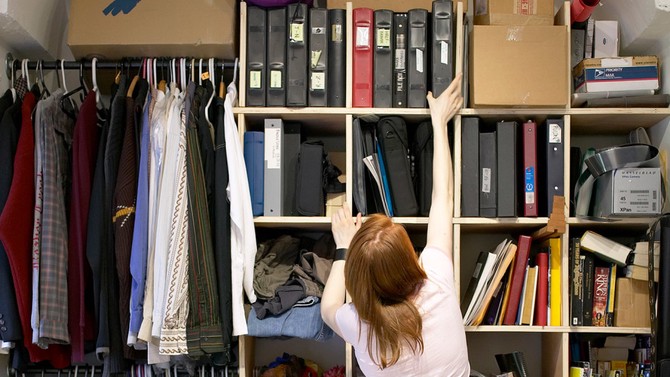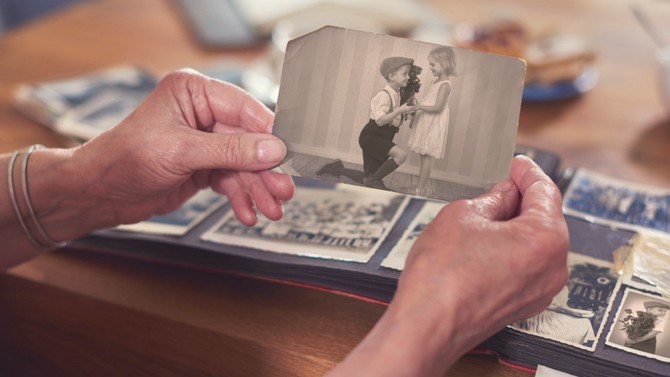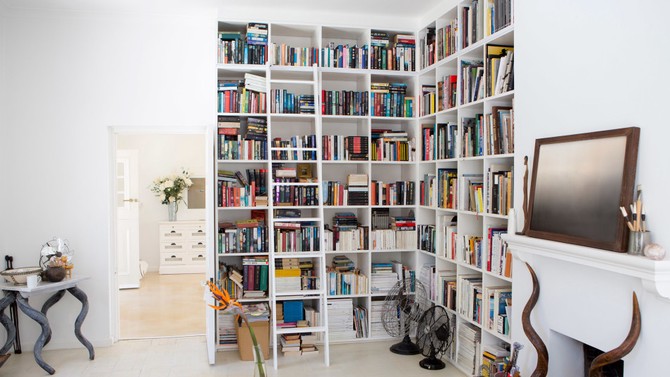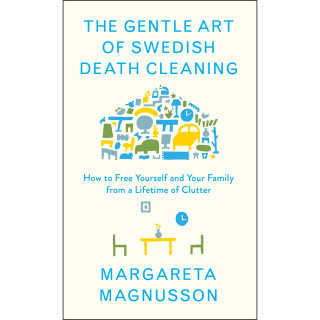5 Things You Need to Know about Swedish Death Cleaning
The author of The Gentle Art of Swedish Death Cleaning on how getting rid of unnecessary objects and clutter can bring order to your home and your life—before loved ones have to do it for you.
By Margareta Magnusson

Photo: Nick White
Death Cleaning Is Not Sad
So what is death cleaning? For me it means going through all my belongings and deciding how to get rid of the things I do not want anymore. Just look around you. Several of your things have probably been there for so long that you do not even see or value them anymore.
I think the term döstädning (dö is "death" and städning is "cleaning") is quite new, but not the act of döstädning. It is a word that is used when you or someone else does a good thorough cleaning and gets rid of things to make life easier and less crowded. It does not necessarily have to do with your age or death, but often does. Sometimes you just realize that you can hardly close your drawers or barely shut your closet door. When that happens, it is definitely time to do something, even if you are only in your thirties. You could call that kind of cleaning döstädning, too, even if you may be many, many years away from dying.
I think the term döstädning (dö is "death" and städning is "cleaning") is quite new, but not the act of döstädning. It is a word that is used when you or someone else does a good thorough cleaning and gets rid of things to make life easier and less crowded. It does not necessarily have to do with your age or death, but often does. Sometimes you just realize that you can hardly close your drawers or barely shut your closet door. When that happens, it is definitely time to do something, even if you are only in your thirties. You could call that kind of cleaning döstädning, too, even if you may be many, many years away from dying.

Photo: Gregory Costanzo
How to Begin?
Be aware of the fact that to downsize your home will take some time. This new job of yours will not be accomplished any faster if you wait, but with a little practice and preparation, it will certainly be easier for you to make decisions about how to get rid of things. Trust me, the more time you spend going through your belongings, the easier it will be for you to decide what to keep and what not to. The more you work at it, the less time-consuming it will become.
Start by checking the basement or the attic or the cupboards by your front door. These areas are great places to temporarily get rid of your excess. Temporarily—well, many of the things you have in storage have probably been standing there for ages. You may even have forgotten what it is you have there. Good for you, because you will now realize that you will not miss anything if you throw it away.
Start by checking the basement or the attic or the cupboards by your front door. These areas are great places to temporarily get rid of your excess. Temporarily—well, many of the things you have in storage have probably been standing there for ages. You may even have forgotten what it is you have there. Good for you, because you will now realize that you will not miss anything if you throw it away.

Photo: JGI/Jamie Grill
Appreciating Objects
I've discovered that it is rewarding to spend time with the objects I want to rid myself of one last time and then dispose of them. Each item has its own history, and remembering that history is often enjoyable. When I was younger, I never used to have the time to sit and think about what an object meant to me in my life, or where it came from, or when and how it came into my possession. The difference between death cleaning and just a big cleanup is the amount of time they consume. Death cleaning is not about dusting or mopping up; it is about a permanent form of organization that makes your everyday life run more smoothly.

Photo: Gpointstudio
A Small Piece of Advice
Don't start with photographs—or letters and personal papers, for that matter.
It can be both a lot of fun and a bit sad to go through photographs and letters, but one thing is certain: if you start with them, you will definitely get stuck down memory lane and may never get around to cleaning anything else.
Pictures and letters that you have saved for some reason must wait until you have arranged the destinies for your furniture and other belongings. In general, when death cleaning, size really does matter. Start with the large items in your home, and finish with the small. Photographs carry such a weight of emotion that they will hinder your work, but are also so important.
It can be both a lot of fun and a bit sad to go through photographs and letters, but one thing is certain: if you start with them, you will definitely get stuck down memory lane and may never get around to cleaning anything else.
Pictures and letters that you have saved for some reason must wait until you have arranged the destinies for your furniture and other belongings. In general, when death cleaning, size really does matter. Start with the large items in your home, and finish with the small. Photographs carry such a weight of emotion that they will hinder your work, but are also so important.

Photo: Paul Bradbury
Tell your loved ones and friends what you are up to. They might want to help you and even take things you don't need and also help you to move things that you cannot move alone. You will see that a steady stream of people you like (or even dislike) will come to take things such as books, clothes and utensils.
Perhaps a grandchild or someone else you know is about to move into their first apartment. Invite them over and you can show them your things and chat about them, telling them stories about the objects (and perhaps even your life) that they do not know. Meanwhile, have some bags and boxes at hand that you can fill while you are chatting, so they can take stuff with them right away.
 Excerpted from The Gentle Art of Swedish Death Cleaning by Margareta Magnusson. Copyright © 2018 by Margareta Magnusson. Excerpted with permission by Scribner, a Division of Simon & Schuster, Inc.
Excerpted from The Gentle Art of Swedish Death Cleaning by Margareta Magnusson. Copyright © 2018 by Margareta Magnusson. Excerpted with permission by Scribner, a Division of Simon & Schuster, Inc.
Perhaps a grandchild or someone else you know is about to move into their first apartment. Invite them over and you can show them your things and chat about them, telling them stories about the objects (and perhaps even your life) that they do not know. Meanwhile, have some bags and boxes at hand that you can fill while you are chatting, so they can take stuff with them right away.
 Excerpted from The Gentle Art of Swedish Death Cleaning by Margareta Magnusson. Copyright © 2018 by Margareta Magnusson. Excerpted with permission by Scribner, a Division of Simon & Schuster, Inc.
Excerpted from The Gentle Art of Swedish Death Cleaning by Margareta Magnusson. Copyright © 2018 by Margareta Magnusson. Excerpted with permission by Scribner, a Division of Simon & Schuster, Inc.
Published 01/24/2018

